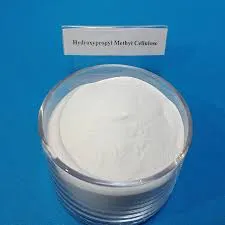
Dec . 15, 2024 00:40 Back to list
HPMC Powder Pricing Trends and Market Analysis for 2023
The Market Dynamics of HPMC Powder Pricing
Hydroxypropyl methylcellulose (HPMC) powder has become a significant component across various industries including pharmaceuticals, construction, and food processing, thanks to its unique properties such as water solubility, gel formation, and thickening abilities. With the increasing applications of HPMC powder, understanding its pricing dynamics is essential for businesses that rely on this material.
Factors Influencing HPMC Powder Prices
1. Raw Material Costs The production of HPMC involves various raw materials, including cellulose and propylene oxide. Fluctuations in the prices of these input materials can significantly impact the final price of HPMC powder. For instance, if the cost of cellulose rises due to supply chain disruptions or increased demand for natural fibers, this can lead to a corresponding increase in HPMC prices.
2. Production Capacity The ability of manufacturers to produce HPMC powder efficiently affects market prices. If production facilities are operating at full capacity or facing maintenance issues, this can lead to reduced supply, pushing prices higher. Conversely, if manufacturers expand their capacity or technological advancements improve production efficiency, prices may stabilize or even decrease.
3. Market Demand Demand for HPMC powder varies across different sectors. The construction industry, for instance, has seen a surge in demand for HPMC as it is used as a thickening agent in plaster and mortar applications. Similarly, the pharmaceutical sector uses HPMC as a binder in tablets and a coating agent. Seasonal trends and economic conditions can influence this demand, with a strong economy potentially leading to increased construction activities and, consequently, higher HPMC consumption.
4. Geopolitical Factors Trade policies, tariffs, and geopolitical tensions can also affect the pricing of HPMC powder. For example, tariffs on imports of raw materials or finished goods can increase costs for manufacturers, which they may pass on to consumers. Similarly, political instability in regions reliant on cellulose production can disrupt supply chains, leading to price volatility.
hpmc powder price

5. Technological Advances Innovations in production techniques can lead to cost reductions and potentially lower prices for HPMC powder. Manufacturers that invest in technology to enhance the efficiency of their processes can reduce their overall production costs. This may result in a competitive pricing strategy, enabling them to attract more customers in a crowded market.
Current Market Trends
As of late 2023, the HPMC powder market is characterized by moderate growth and price stability driven by a balanced supply-demand equation. According to recent reports, prices have remained relatively consistent over the past year, primarily due to steady demand from the construction and pharmaceutical sectors. However, manufacturers are keeping a close watch on raw material prices and geopolitical conditions, as any fluctuations could lead to sudden changes in HPMC pricing.
Furthermore, sustainability is becoming an increasingly important factor. Consumers and industries are showing a preference for sustainably sourced materials, leading manufacturers to explore eco-friendly alternatives for HPMC production. This shift may initially influence production costs but could foster long-term price stabilization as sustainable practices become standardized.
Conclusion
The pricing of HPMC powder is influenced by a multitude of factors, including raw material costs, production capacity, market demand, geopolitical dynamics, and technological advancements. Businesses engaged in industries utilizing HPMC must remain vigilant about these variables to navigate the market effectively. As trends evolve, staying informed will be critical for procurement strategies and overall operational planning. By understanding these dynamics, companies can ensure they are well-positioned to manage costs and respond to market changes appropriately.
-
Versatile Hpmc Uses in Different Industries
NewsJun.19,2025
-
Redispersible Powder's Role in Enhancing Durability of Construction Products
NewsJun.19,2025
-
Hydroxyethyl Cellulose Applications Driving Green Industrial Processes
NewsJun.19,2025
-
Exploring Different Redispersible Polymer Powder
NewsJun.19,2025
-
Choosing the Right Mortar Bonding Agent
NewsJun.19,2025
-
Applications and Significance of China Hpmc in Modern Industries
NewsJun.19,2025







